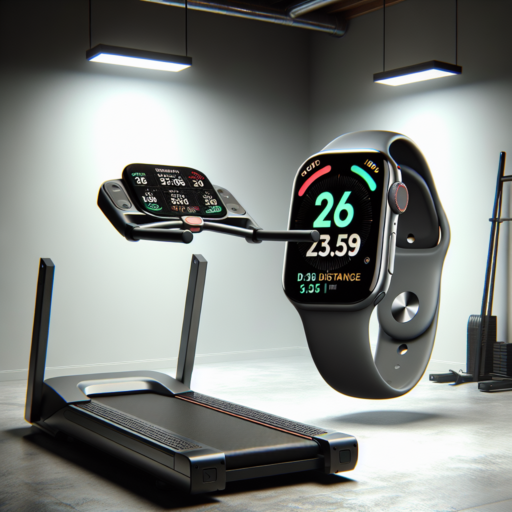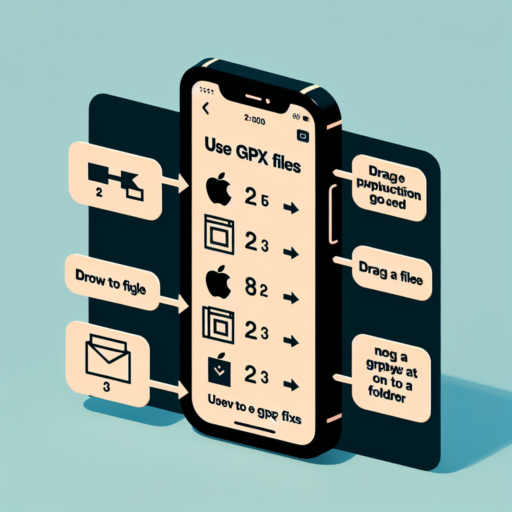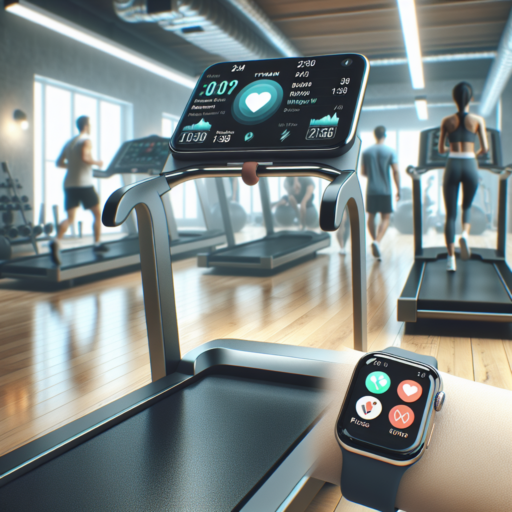Is treadmill or Apple Watch distance more accurate?
When evaluating the accuracy of distance tracking between a treadmill and an Apple Watch, it’s important to consider how each device calculates distance. Treadmills measure distance based on belt revolutions, directly translating the movement into distance. It’s a straightforward method that’s calibrated based on the treadmill’s specifications. On the other hand, the Apple Watch uses a combination of motion sensors and GPS (when available outdoors) to estimate the distance covered. This method can be influenced by several factors, including stride length and arm movement, which adds a layer of complexity to its accuracy.
Factors Influencing Treadmill Accuracy
Treadmill accuracy can be impacted by a variety of factors, including belt slippage, calibration drift over time, and the precision of the machine itself. High-quality treadmills in gyms are regularly maintained and calibrated, likely giving more accurate readings. However, personal treadmills might not receive the same level of maintenance, potentially affecting the accuracy of distance measurements.
Factors Influencing Apple Watch Accuracy
The accuracy of an Apple Watch in measuring distance depends significantly on the calibration process. When first used, the Apple Watch needs to learn the user’s stride length in different conditions (walking vs. running, indoor vs. outdoor) to improve its accuracy. Environmental factors like dense urban settings can also impact the GPS accuracy of the device. Additionally, the consistency in wearing the watch snugly on the wrist and the user’s arm motion can influence the data collected.
In conclusion, both treadmills and Apple Watches have their own sets of variables that can affect the accuracy of distance tracking. For treadmill users, it’s crucial to ensure the machine is well-maintained and properly calibrated. Meanwhile, Apple Watch wearers should focus on calibrating their devices by allowing it to learn their stride length and by wearing it consistently during exercise. This dual approach optimizes the accuracy of distance measurements, though each method inherently possesses its unique strengths and limitations.
Is the Apple Watch running distance accurate?
When assessing the precision of the Apple Watch for measuring running distances, several factors come into play. The device utilizes a combination of GPS technology and an onboard accelerometer to record distance traveled. However, the accuracy of these measurements can be influenced by various external and internal factors.
Factors Influencing Accuracy
The primary factor that affects the accuracy of distance tracking on the Apple Watch is GPS signal strength. Tall buildings, dense forests, or even cloudy weather can interfere with the GPS signal, potentially leading to less accurate distance recordings. Additionally, the device’s ability to calibrate itself to your unique step length plays a crucial role. The Apple Watch gradually improves its calibration and, consequently, its distance tracking accuracy by learning your personal stride length over multiple runs. This process is enhanced when the Watch can utilize the GPS data from outdoor runs.
Another significant aspect to consider is the model of the Apple Watch. Newer models tend to incorporate more advanced GPS chips and additional sensors, which can help improve location tracking and thus distance measurement accuracy. Moreover, the position of the watch on your wrist and even the tightness of the band can affect the accelerometer’s data, further influencing the precision of distance calculations.
User Experiences and Reliability
Many users report a high level of satisfaction with the accuracy of their Apple Watch for running distances, especially under optimal conditions. Comparisons with dedicated running GPS watches and odometer readings from treadmills often show close correlations in distance tracking. However, discrepancies can occur, particularly in challenging environments or when the watch has not been properly calibrated.
In summary, while the Apple Watch is a highly efficient tool for tracking running distances, its accuracy is not infallible. Understanding and mitigating the factors that can affect GPS and sensor fidelity are crucial for runners who rely on their Apple Watch for training and performance tracking.
Is 3 miles on a treadmill the same as outside?
When considering the effectiveness and impact of running, many athletes and fitness enthusiasts question whether covering 3 miles on a treadmill is equivalent to running the same distance outside. This debate often revolves around the differences in terrain, air resistance, and the mental and physical challenges of indoor versus outdoor running.
Differences in Resistance and Terrain
Running outdoors exposes you to natural elements and varying terrains, which can significantly affect your energy expenditure. Wind resistance and changes in elevation are absent on a treadmill, where conditions remain controlled and constant. To mimic outdoor running, some runners increase the treadmill’s incline; however, this doesn’t fully replicate the unpredictable nature of outdoor surfaces. The biomechanics of running on a treadmill vs. outdoors can also differ, with some studies suggesting that treadmills may alter your natural stride and running efficiency.
Perceived Exertion and Mental Engagement
Perceived exertion is another factor to consider when comparing treadmill to outdoor running. Many runners find running outside more mentally stimulating and engaging due to the changing scenery and environment. This can lead to a lower perceived exertion compared to running the same distance on a treadmill, where the static environment might contribute to a higher sense of fatigue and effort. Moreover, the mental challenge of pushing yourself without the dynamic landscapes and milestones of outdoor running can make 3 miles on a treadmill feel tougher for some individuals.
Understanding these differences is crucial for runners who are trying to equate their indoor workouts to outdoor running. Adapting your treadmill settings and being mindful of the psychological aspects can help bridge the gap between indoor and outdoor running experiences.
No se han encontrado productos.
Is Apple Watch good for treadmill?
When analyzing the effectiveness of the Apple Watch for treadmill workouts, it’s essential to delve into the specific features that cater to indoor runners. The Apple Watch has cemented itself as a versatile fitness tracker, offering a wide range of functionalities that are beneficial for those who frequently use the treadmill for their fitness routine.
Accuracy of Tracking Features
One of the primary concerns for treadmill runners is the accuracy of tracking metrics such as distance, pace, and calories burned. The Apple Watch utilizes advanced sensor technology, including the built-in accelerometer and gyroscope, to provide reliable data for treadmill exercises. This ensures that users receive precise feedback on their workout performance, allowing for more targeted and efficient training sessions. Moreover, the watch’s ability to calibrate to individual running styles enhances its accuracy over time, making it an indispensable tool for serious runners.
Integration with Fitness Apps
Another notable aspect is the Apple Watch’s seamless integration with various fitness apps designed specifically for indoor running. Apps like Nike Run Club and Strava offer enhanced features when paired with the Apple Watch, such as custom workout plans and social sharing options. This integration not only broadens the scope of data available to users but also introduces an element of motivation and community support, which can be particularly beneficial for those relying on the treadmill as their primary mode of exercise.
The Apple Watch also shines in its ability to offer personalized coaching and progress tracking through its native Workout app. Users can set specific goals for their treadmill workouts, monitor their heart rate in real-time, and receive alerts to keep up with their desired pace or intensity level. These features, combined with the watch’s comprehensive health and wellness tracking capabilities, underscore its utility for individuals looking to maximize their treadmill workouts.




